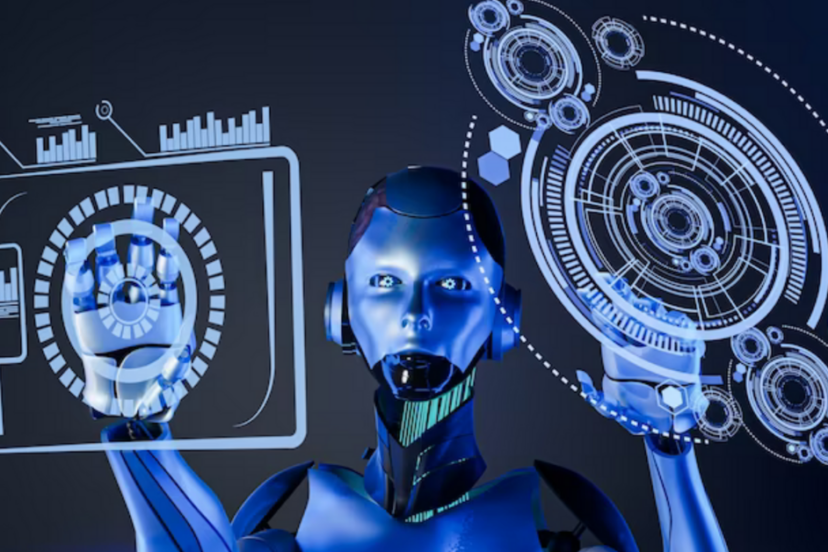The Rising Need for Explainability and Interpretability in AI Models
As we stand on the brink of the industrial revolution, Artificial Intelligence (AI) undeniably shapes the world around us. AI models are becoming increasingly complex, making their decision-making processes more difficult to understand.
We must have a crucial dialogue as we plunge into AI’s exciting but uncertain future. Its impressive powers and unimaginable heights aren’t the point. Understanding these robust instruments is more fundamental. Yes, AI models explainability and interpretability.
If you’re curious about these questions or the ever-changing world of AI, you’re in the right place. This blog will describe AI models and why we should strive for more explainable and interpretable systems. We’ll dive deep into AI complexity, seeking clarity on what these systems tell us. Prepare for an exciting voyage into artificial intelligence!
Understanding AI Models
AI models have grown essential to modern technology, affecting many parts of our lives. Models that replicate human cognition allow machines to accomplish complex tasks and make data-driven decisions. Understanding AI models’ operation is essential to maximizing their potential and minimizing their drawbacks.
At the heart of AI models are algorithms that process data and learn patterns. These algorithms, often called machine learning algorithms, use large datasets to train the models. The models alter their internal parameters during training to reduce discrepancies between their predictions and the training data results. This lets them generalize and accurately predict new facts.
Complexity in AI Models:
The rapid development of advanced machine learning algorithms has made AI model complexity a hot topic. These models, intense neural networks, have complex topologies with many interconnected layers and many parameters.
This complexity allows AI models to perform well across tasks, but it also makes it difficult to understand their inner workings, interpret judgments, and identify biases. These models are like elaborate black boxes with unclear input-output relationships as they become more complex.
While complex AI models perform well, we need more transparency. Researchers and practitioners are developing methods for showing feature importance, explaining decisions, and simplifying model approximations to unravel this complexity.
The Growing Importance of Explainability in AI Models
As AI innovation touches practically every aspect of our lives, the need to understand these complex systems’ decision-making processes is expanding at an unprecedented rate. “Explainability” drives this urgency.
What is Explainability in AI?
Explainability in the context of AI refers to the degree to which a human can comprehend an AI system’s decision-making or prediction process. The goal is to shed some light on the inner workings of AI and discover how it takes in data and generates results.
The Importance of Explainability in AI Models
Explainability is essential today as high-stakes AI models are used. They advise on financial investments, medical diagnostics, news and information, and court judgments. An error or bias could have severe consequences in all these areas. Explainability guarantees fair, responsible, and transparent AI judgments. They’re rational and ethical. Explainability helps us fine-tune AI models by revealing their flaws.
In an age of sophisticated AI models, we must ensure they are also explainable. Because in AI’s excellent chess game, it’s about making the right moves and knowing why. That’s AI’s explainability. Explainability and interpretability go hand in hand as we explore AI.
The Critical Need for Interpretability in AI Models
As we explore AI explainability, we discover the importance of interpretability. Both approaches help explain AI models’ decision-making.
Define Interpretability in AI
AI interpretability is the extent to which machine learning models’ inner workings, choices, and forecasts can be understood and articulated in human words. Making complex algorithms and models more transparent allows academics, domain experts, and end-users to comprehend how they reach their results.
Interpretable AI models provide increased trust, accountability, and the detection of biases and errors by revealing the input data elements and patterns that affect their predictions. Interpretability is vital in critical areas like healthcare, finance, and law, where understanding AI judgments is essential for making informed, responsible actions. Without interpretability, the model will likely produce unexpected results when faced with unexpected scenarios.
Techniques to Enhance Explainability and Interpretability
As AI explainability and interpretability become increasingly important, it’s natural to wonder how we can illuminate these complicated models. Thankfully, academics are creating many methods to improve explainability and interpretability. Here are some notable ones:
1. LIME (Local Interpretable Model-Agnostic Explanations):
LIME helps explain classifier and regressor predictions. Instead of discussing model behavior, it approximates the local decision boundary and explains each prediction.
2. SHAP (Shapley Additive exPlanations):
Game theory-inspired SHAP provides each attribute a priority value for a forecast. This lets it comprehend how each feature affects the forecast, providing a global overview and detailed local explanations.
3. Attention Mechanisms:
Attention techniques are heavily used in natural language processing and computer vision. The inputs to the model’s decision-making process are highlighted. This elucidates the model’s logic and central concern.
4. Feature Visualization:
Visualizing the features utilized to generate judgments might improve the interpretability of AI models. We can identify which aspects influence the model’s predictions by highlighting regions in an image or displaying feature relevance scores for tabular data.
5. Rule-Based Explanations:
AI model rule-based explanations reveal the model’s decision-making process. Users can understand why the model draws certain findings by reading these rules. This transparency improves the model’s interpretability, making it easier to trust and use.
6. Influence Functions:
The “influence function” calculates how much each piece of training data influences a model’s prediction. Locating the most essential data points lets you understand how the model generalizes from the training data.
7. Activation Maps:
Activation Maps, a computer vision tool, highlight which portions of a picture are most important when producing a prediction. This explains the model’s methods for detecting trends and anomalies.
8. Layer-wise Relevance Propagation (LRP):
It is a technique for linking the predictions of a model to the features that feed into it. It explains the impact of the input features on the prediction.
These are just a few techniques; expect more as AI dominates the world.
Building Trust in AI Systems through Explainability and Interpretability
A more transparent AI model fosters trust and reliance among its users. It assures them that the AI system isn’t just an enigmatic black box but a well-understood tool that works for their benefit.
Trust through Explainability
Explainability shows an AI model’s “how” and promotes trust. Imagine talking to someone who merely nods or shakes. Understanding their reasons makes it easier to trust their judgment. AI models, too.
AI systems invite us into their environment by explaining their decision-making processes. Transparency builds confidence and empowers AI users.
Trust through Interpretability
The capability of interpretation goes even further. It reveals the AI model’s internal cause-and-effect links, answering the question of “why” AI makes certain decisions. It’s like carrying a map through a maze; you know exactly where you are and can relax. With interpretability, we can foresee how the AI system will act, giving us more leeway in fine-tuning and management.
Conclusion
As we end our investigation into the importance of explainability and interpretability in AI models, we are reminded that, while AI has enormous potential, its appropriate implementation is critical. The rise of AI is about producing machines that can dwell peacefully with humans, not just intelligent machines. Understanding, questioning, and refining AI conclusions guarantees that the technology is used to augment rather than replace human agency.
Embracing transparency allows us to reap the benefits of AI while adhering to our ethical duties to fairness, accountability, and the overall welfare of society. The challenge might be formidable, but remember that the darkest night produces the brightest stars. The future of AI is exciting, and with a clear understanding of how and why our AI systems make their decisions, we’re bound to shine the brightest.
What’s your take on explainability and interpretability in AI? Are they a must-have or a good-to-have feature in AI models? Please share your thoughts,, and let’s keep the conversation going!
Thank you for helping us study the AI model’s explainability and interpretability. Stay tuned for more on artificial intelligence.
FAQs
What is explainability in AI? Explainability refers to the degree to which a human can understand an AI system’s process to arrive at a decision.
How is interpretability different from explainability? While explainability is about understanding the process, interpretability further explains why specific inputs led to certain outputs within the AI model’s decision-making process.
Why are explainability and interpretability important in AI? They help validate AI’s decisions, foster trust among users, promote accountability, and aid in debugging and improving AI models.
What techniques are used to improve explainability and interoperability? Techniques like LIME, SHAP, and various attention mechanisms are used to improve AI’s explainability and interpretability.
How do explainability and interpretability build trust in AI? By making AI systems transparent and understandable, explainability and interpretability assure users that the AI isn’t just a mysterious black box, fostering trust and reliance.




